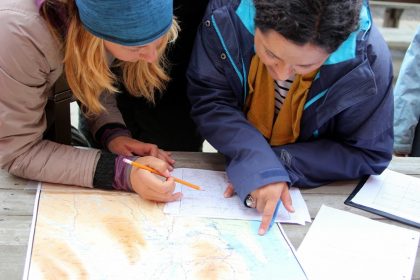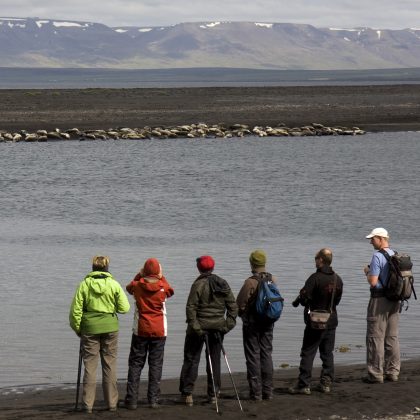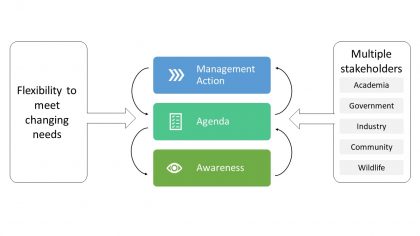What does a responsible framework for managing wildlife watching tourism look like?
The Case of Seal Watching in Iceland

By Jessica Aquino, jessica@holar.is
I have worked in Iceland for the past six years as an Assistant Professor at Hólar University and as Head of Tourism Research at the Icelandic Seal Center. The question “What does a responsible framework for managing wildlife watching tourism look like in the context of seal watching in Iceland?” has been talked about with my colleagues and I for quite some time.
We know that wildlife watching as a tourism activity can help to stimulate the local economy. It also can help to develop a stronger awareness of wildlife conservation issues in general for both visitors and locals.

The purpose of our article was to further research what a responsible framework for managing wildlife watching that ensures positive outcomes for wildlife, locals, and visitors would look like.
We learned that wildlife managers who work towards meeting responsible and sustainable management practices often work with multiple stakeholder groups.
However, responsible management strategies driven by ethical frameworks are often missing in the wildlife tourism literature.
Seal watching has increased in Iceland, and we believe that it will continue to grow in popularity.
In Iceland, it is known that nature is the main attraction for tourists. However, management plans for wildlife watching activities are scarce.
There is a crucial need to develop evidence-based management. For example, visitors to Iceland believe that nature conservation should be improved, and the majority of Icelanders (75%) feel that the negative effects tourists have on nature are too high.
Seal watching activities in Iceland revolve around the two breeding seal species; harbour seals (Phoca vitulina) and grey seals (Halichoerus grypus). Harbour seals are easily accessible to visitors in several areas, through land and boat-based seal-watching activities. Grey seals normally haul out in more remote areas, but can sometimes be spotted in harbour seal colonies.
Visits to seal colonies during sensitive periods (such as during the pupping season), approaching the animals too closely, and making loud noises or vivid movements negatively impact on the seals. Such disturbance can lead to alteration of their natural behaviours and changes in distribution of seal populations, which in turn can affect their fitness.

Our Ethical Management Framework (Figure 1) recognizes that the tourism industry, government, locals, and the academic community should all be involved in developing management strategies.
Wildlife tourism involves numerous stakeholders. It is necessary that knowledge and practices from both the social and natural sciences be incorporated when developing management strategies.
Most importantly, understanding the meaning of sustainability and responsibility from a community perspective – and addressing local concerns – is important.
There is a need to increase transparency, and further cooperation between government and residents to minimise misunderstandings, marginalization, and resentment.
We also argue that an exploration of the social representation of the meaning of suitability and responsibility adds to this social-historical context. It helps managers understand community needs and wants towards wildlife tourism management.
This is important when working with marginalised communities or those with fewer opportunities for agency in determining management practices that could potentially affect their future community livelihoods.
Additionally, if managers work closely with local stakeholders, they also help foster a sense of local identity with wildlife and natural habitats.
We hope that the framework will help to guide the use of ethical practices for managing human-wildlife interactions in other countries.

For more information, please check out the full paper here: https://doi.org/10.1016/j.ocecoaman.2021.105670
Aquino, J., Burns, G.L. and Granquist, S. 2021 A Responsible Framework for Managing Wildlife Watching Tourism. Ocean and Coastal Management, 210: 105670. https://doi.org/10.1016/j.ocecoaman.2021.105670

Trackbacks/Pingbacks